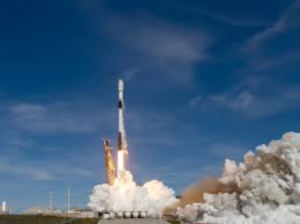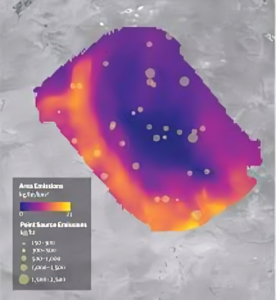Bezos-Backed MethaneSAT Lost in Space During Critical Climate Mission
Introduction
A pioneering effort to monitor global methane emissions has suffered a significant blow. MethaneSAT, an $88 million satellite funded by Jeff Bezos’s Earth Fund alongside the Environmental Defense Fund (EDF) and the New Zealand Space Agency, went silent on June 20, 2025, after suffering a power failure that rendered it unrecoverable. Launched in March 2024 aboard a SpaceX Falcon 9, MethaneSAT promised unprecedented resolution in detecting methane leaks from oil and gas operations worldwide.
— —
—
Mission Overview
MethaneSAT’s goal was simple yet vital: deliver high‑resolution maps of methane emissions from roughly 50 major regions, helping scientists and regulators pinpoint leaks rapidly. Methane, though shorter‑lived than CO₂, packs 80 times the warming potential over 20 years, making its mitigation one of the highest‑impact climate actions available.
Key mission highlights:
- High‑Performance Spectrometer: Ball Aerospace‑built sensor able to detect small leaks over areas hundreds of square kilometers.
- Sun‑Synchronous Orbit: Consistent local overpass times to compare day‑to‑day changes.
- Open Data Policy: Freely available global emissions maps to empower NGOs, governments, and private firms.
Despite initial technical glitches—intermittent enter‑standby cycles and a failing thruster—the satellite overcame those setbacks to deliver remarkable first data, revealing methane concentrations up to 50% higher than industry estimates in key oil‑producing regions.
—
Setback Details
On June 20, 2025, mission controllers lost all power to MethaneSAT. Efforts to reset the spacecraft failed, and by July 1, the EDF officially declared the satellite lost in space. The final telemetry placed MethaneSAT over Svalbard, Norway, before its systems went dark.
Challenges encountered:
- Power System Failure: Anomalous drop in battery output during a routine solar panel retracking maneuver.
- Thruster Degradation: One of three stabilization thrusters had shown reduced thrust since early 2025.
- Autonomous Sleep Mode: Uncommanded standby cycles forced repeated hard‑resets, taxing onboard electronics.
EDF and its partners are conducting a root‑cause investigation, working with U.S. federal agencies and SpaceX engineers to analyze every bit of telemetry. Insurance covers the $88 million asset; discussions are underway about the feasibility of a replacement mission.

Implications for Climate Research
Losing MethaneSAT leaves a gap in the specialized satellite‑based monitoring that many had hailed as a game‑changer. Though more than a dozen Earth‑observation satellites track methane in broader strokes, none match MethaneSAT’s combination of sensitivity and transparency.
Potential impacts include:
- Regulatory Enforcement Delays: Countries relying on satellite evidence to enforce leak‑reduction pledges may lack timely data.
- Reduced Public Accountability: Open‑source emission maps drove corporate and governmental accountability; gaps may slow progress.
- Slower Climate Action: Identifying and plugging methane leaks is one of the most cost‑effective ways to curb near‑term warming.
However, experts stress this is a setback, not a failure. EDF continues to process all existing MethaneSAT data and will share interim findings. Airborne spectrometers and ground‑based networks remain in operation, albeit covering far fewer regions than MethaneSAT did.
Next Steps and Future Prospects
While no formal launch date has been set for a successor, several paths forward exist:
- Replacement Satellite: A “MethaneSAT 2.0” could incorporate lessons learned, e.g., redundant power buses and improved thermal control.
- International Partnerships: EDF is in talks with the European Space Agency and Japan’s space agency to host methane sensors on their platforms.
- Distributed Monitoring: Greater reliance on small constellations of CubeSats carrying miniaturized sensors, trading resolution for coverage and resilience.
The New Zealand Space Agency, which invested NZ$ 26 million, reaffirmed its commitment to space‑based climate science, noting that “every mission, successful or not, advances our knowledge.”
Conclusion
MethaneSAT’s loss underscores the inherent challenges of space missions but should not deter global efforts to curb methane emissions—a greenhouse gas responsible for nearly one‑third of industrial‑era warming. The data already collected will inform policies and technologies to detect and fix leaks more efficiently. As the world races to meet its 2030 climate targets, resilient and redundant monitoring systems will be critical. Through collaboration, innovation, and hard‑won lessons from MethaneSAT, the climate science community is poised to continue its vital work.